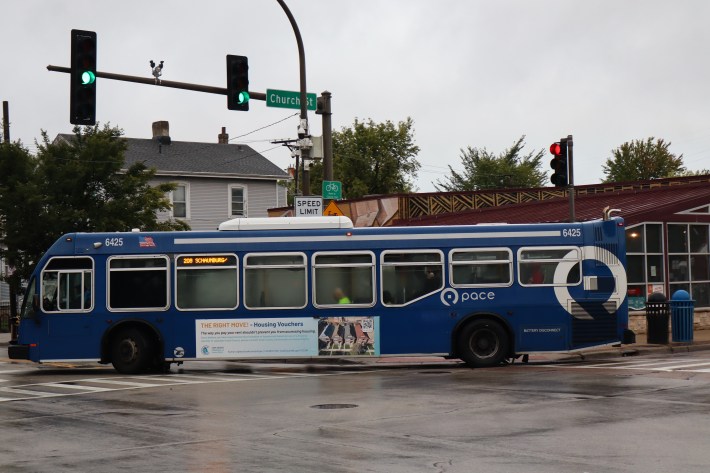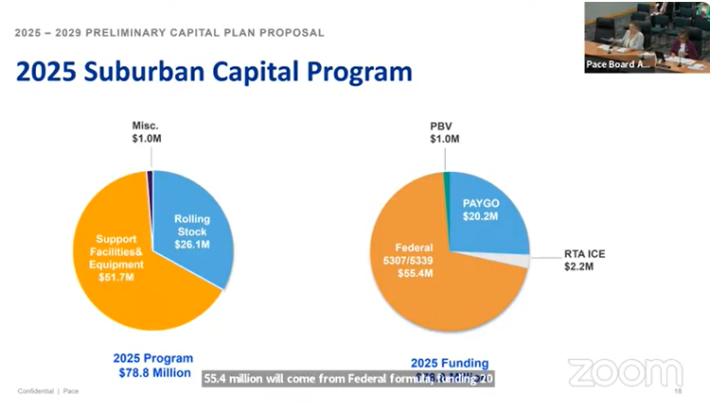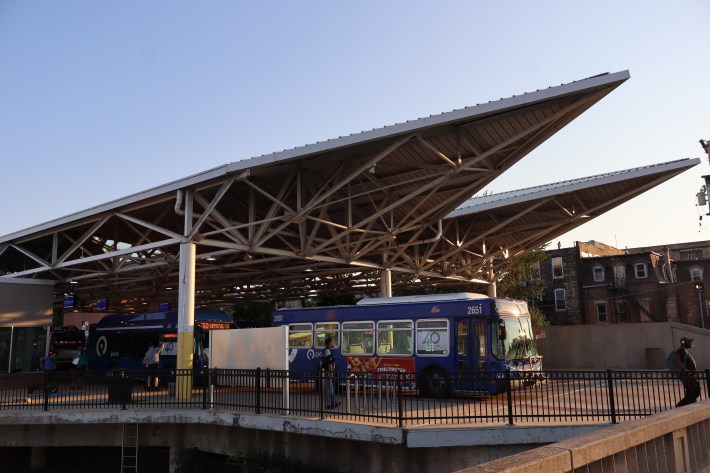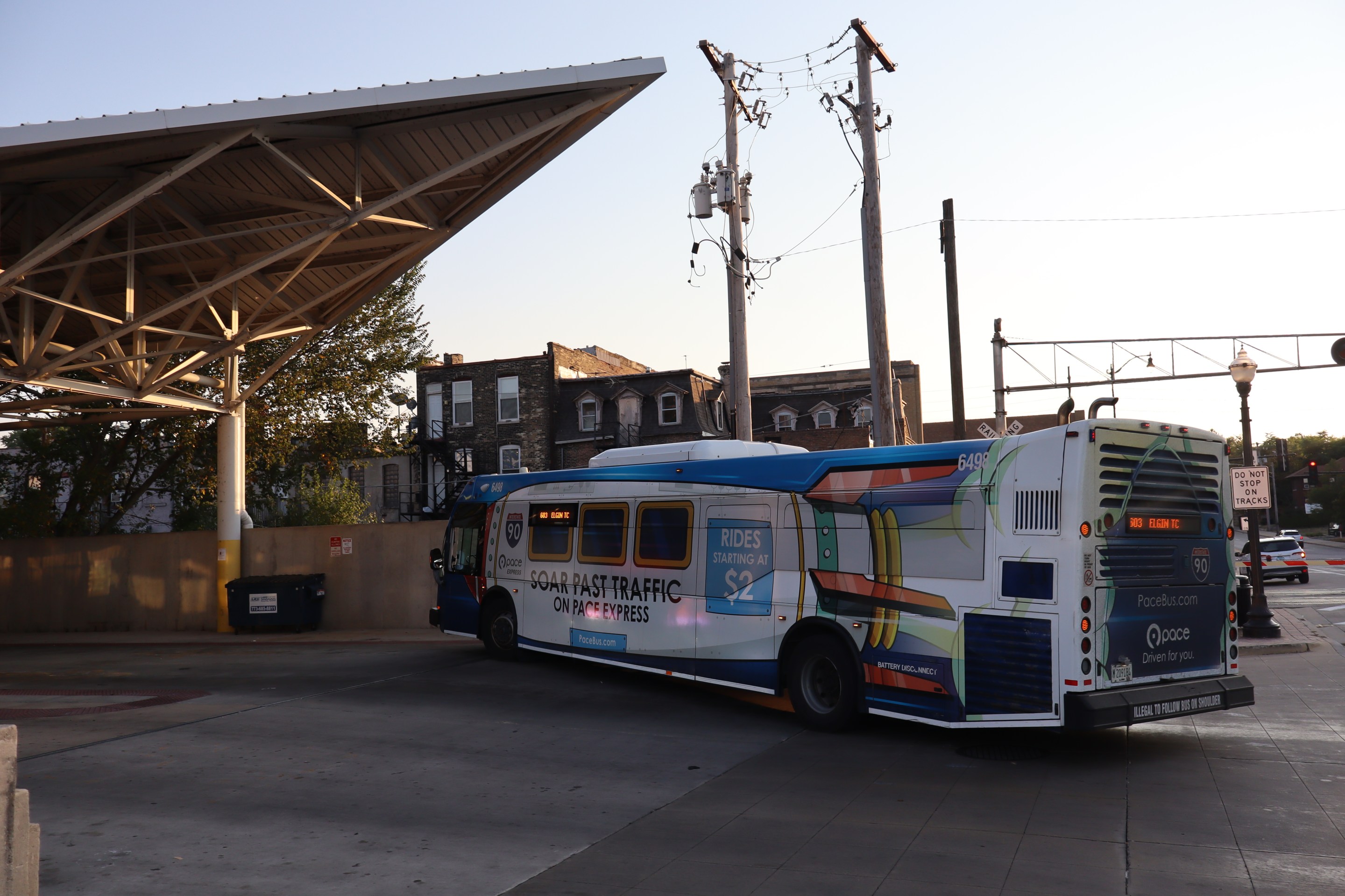
Pace riders may get more evening and weekend service in 2025 – but it will be another month before they’ll see any details on what that might look like.
During the September 18 meeting of the Pace board, Pace officials gave a presentation previewing the proposed 2025 budget. While the actual budget document won’t be publicly released until the October 16 meeting, the suburban bus agency already sent out a press release saying that it will include “provisions to enhance service frequency, add trips, and provide additional subsidy support for Pace’s dial-a-ride partners.”
On the capital budget front, Pace continues to work toward its goal of going zero emission by 2040, though the progress isn’t a straight line. Work continues on expanding and converting the garages that serve the routes around Waukegan, Elgin, and the southwest suburbs. Pace plans to experiment with hydrogen-powered buses, but it’s also buying diesel, hybrid, and compressed natural gas buses to meet its more immediate needs.
Pace is expected to hold public hearings in late October and adopt the finalized budget on November 13. The Regional Transportation Authority – which oversees Pace, the CTA, and Metra – must vote on whether to approve it, which its board is expected to do during its December 19 meeting. However, that step is usually a formality.
Operations
Pace Executive Director Melinda Metzger told the board that the system’s fixed-route ridership is around 75 percent of the pre-pandemic levels, while its paratransit service actually exceeds pre-pandemic numbers. As she has been consistently saying at various meetings and events, the key to improving the former is to provide more frequent and more consistent ridership.
“We also heard from many residents who said more services are needed in the suburbs, which echoes what we've been saying all along, and we will continue to work toward that goal,” Metzger said. “We need funding to put out more service for them.”
Metzger said that riders won’t see any major changes until Pace finalizes its ReVision service overhaul plan, which won’t happen until 2026. For 2025, Pace plans to allocate more money toward beefing up evening and weekend service – something that Pace has already been doing in 2024.

Metzger and Pace Budget Analyst Melanie Castle didn’t elaborate on which routes would get the service increase, but Castle said that the change would translate into more service than before COVID-19 hit.
“Pace plans to add and annualize a total of more than 225,000 hours of service, focusing on improving frequency and adding trips, with the majority of those increases planned for 2025,” she said. “In total, 2025 vehicle hours are expected to reach just above 2 million, which is a 4.3 percent increase over 2019 pre-pandemic actuals. “
Castle was more specific about a major change to how Pace subsidizes dial-a-ride programs. The services pick up and drop off riders within a designated service area using Pace paratransit buses. Depending on the provider, that service area can be a town, a group of towns, a township or even an entire county. In the denser suburbs, they usually serve seniors and/or people with disabilities, but they are more likely to be open to the general public in outlying suburbs and rural areas without much fixed-route service.
Castle told the board that, for the past 15 years, Pace reimbursed providers at $3 per ride. The 2025 budget would increase that subsidy to $7 a ride. Pace will continue allocating funds to encourage collar counties to encourage dial-a-ride consolidation. In 2025, each county would get $200,000. McHenry and Kane counties, which already consolidated their programs, would be able to use the funding to help subsidize ridershare trips for seniors and riders with disabilities.
Capital Projects
Pace is proposing a $78.8 million budget, with $51.7 million of that going toward facilities and equipment, and $26.1 million going toward bus purchases. The remaining money would go to cover unexpected needs.

As Castle noted, most capital projects on the docket are carryovers from 2024 that are either taking longer to get off the ground than expected or haven’t quite been finished. Converting the bus garages to accommodate electric buses and increasing their capacity remains a major priority. First on deck are the North Division garage in Waukegan, the River Division garage in Elgin, and the Southwest Division garage in Bridgeview. The Southwest Division garage already hosts the first EV Pace bus to enter service.
Castle said that River Division garage expansion will double its capacity and allow Pace to fuel the I-90/Jane Addams Tollway express service buses, while the Southwest Division expansion would allow it to accommodate 20 more buses.
Pace and Metra also continue to work on the new Metra/Pace station in downtown Harvey. A new facility will allow a smoother transfer between the two systems. Metzger said that Metra will do most of the construction – Pace is just contributing the funding. Pace is also expected to finish renovating the Northwest Transportation Center in Schaumburg.
With the rolling stock, Pace plans to buy 13 coach-style buses for its I-55/Stevenson Expressway commuter express routes. Metzger previously indicated that there are several challenges to converting those routes to electric. The coach buses are more specialized than the regular buses, and there is the issue of charging. The buses travel longer distance than most Pace routes, especially when one takes return trips into account, which becomes an issue given that electric buses must be recharged more frequently than diesel buses must be refueled.
Pace also plans to buy eight diesel-electric hybrid buses, 15 traditional paratransit buses, and three hydrogen-powered paratransit buses that will operate out of the River Division garage.
Director Thomas Marcucci, who represents DuPage County, said that, given how much it costs to convert the garages (over $1.46 billion, according to Pace estimates as of Spring 2024), he was worried about the logistics of piloting buses using yet another fuel source.

“I don't need an answer today, it's a very complex question, but it basically boils down to, is hydrogen engine [buses] a reality, is it going to happen, how soon is it going to happen, and what are the costs?” he asked.
Metzger replied that Pace is interested in exploring hydrogen buses because they can go longer without refueling than electric buses. “Hydrogen can go for a long period of time, more similar to diesel buses,” she said. “It can be out there 18 hours, and we don't have to worry about [refueling].”
Metzger explained that, for the pilot, getting the new fueling infrastructure in place isn’t an issue, since hydrogen can be trucked in. In the long run, the South Division garage in Markham has already been retrofitted for Compressed Natural Gas buses, and that infrastructure can be used for hydrogen. But Metzger also said that, if they do go beyond the pilot, “we're going to need to have it pumped in, like CNG.”
“Nobody knows the future,” she added. “This is evolving so quickly. The [electric] buses are getting better batteries, lasting longer. We have to see how that goes. In five years, it might be something totally different. I always say - moondust is going to be fueling our vehicles. We're going to need to remain very agile, and see it work and it doesn't work.”
Pace board chair Richard A. Kwasneski noted that the agency doesn’t necessarily have to go all-electric to meet its goal of becoming zero-emission by 2040.
“As Melinda said, we don't know. It could everyone will shift to electric to hydrogen to something else we don't know,” he mused. “Do we see electrification going away? I don't think so. Do we see CNG go away? I don't think so. Over the next 15 years, we're going to have the variance of the type of buses that we have.”
While converting bus fleets to sustainable power sources is a worthy goal, even gas-powered buses reduce emissions and fight climate change by replacing car trips – if buses are fast, frequent, and reliable enough to attract riders. So it's crucial not to lose sight of the fact that while non-polluting buses are good, an equally effective and cheaper – albeit politically more challenging – strategy to reduce global warming is implementing camera-enforced, car-free bus lanes. - John Greenfield, editor

Did you appreciate this post? Please consider making a tax-deductible donation, to help keep Streetsblog Chicago's sustainable transportation news and advocacy articles paywall-free.





